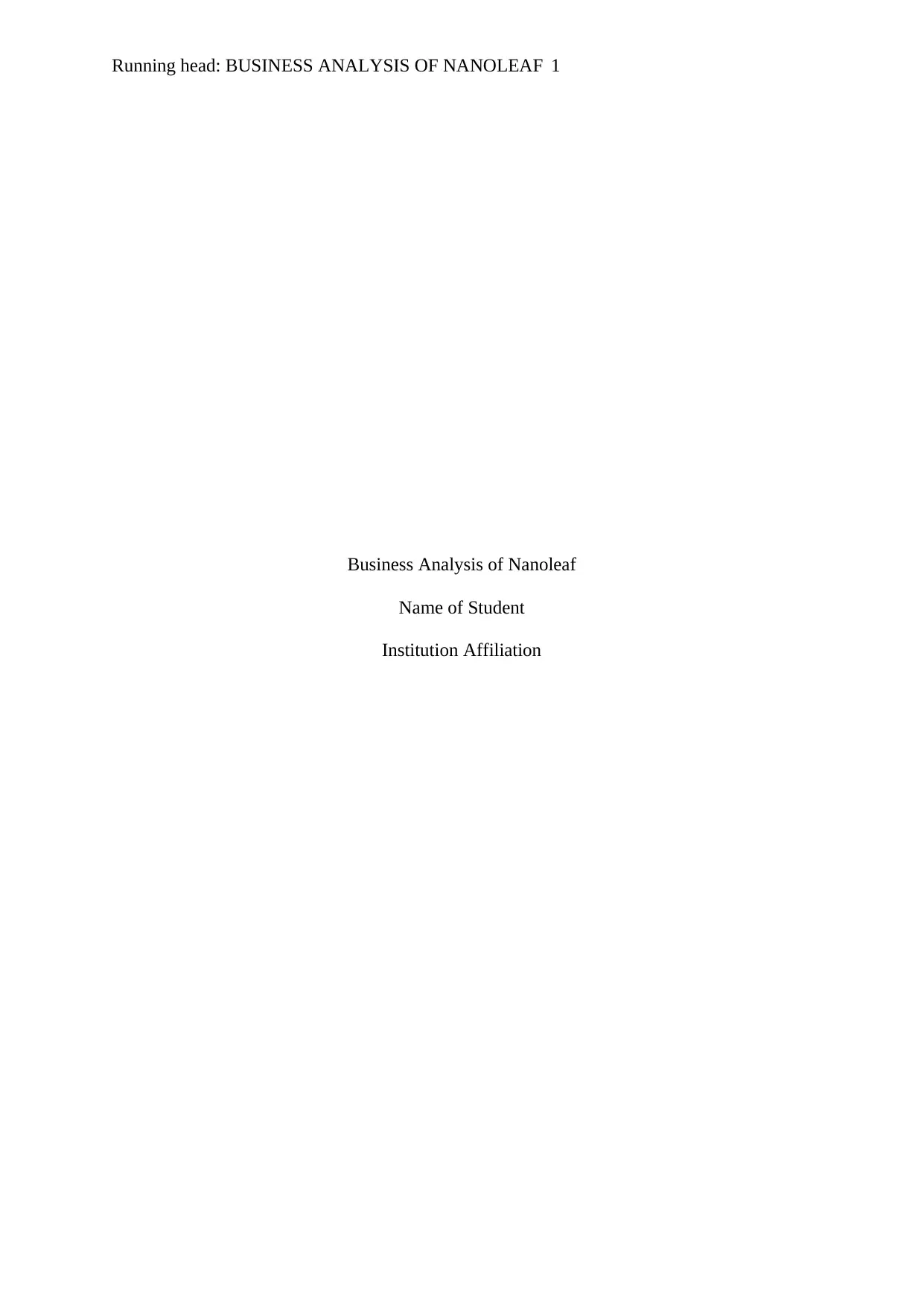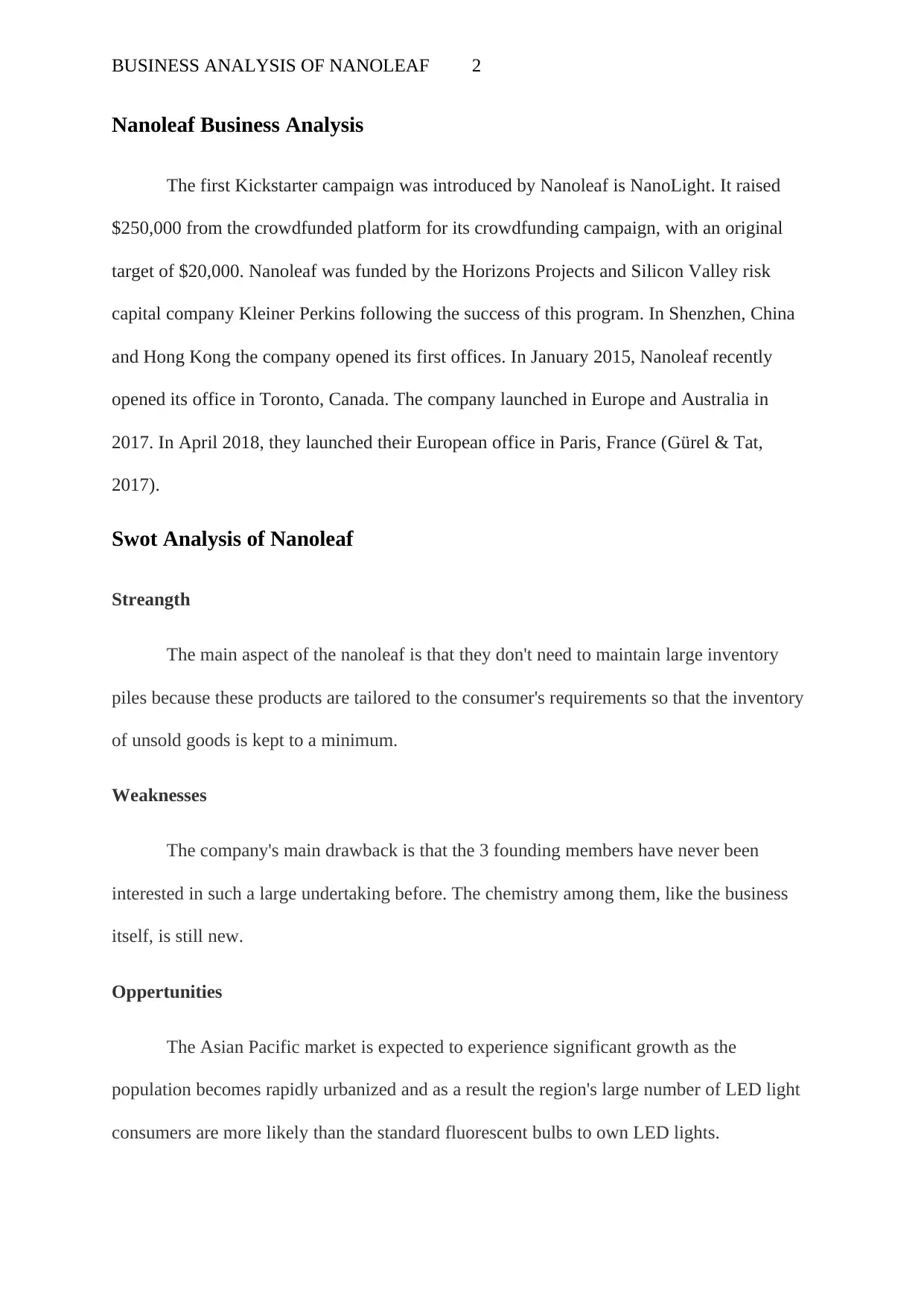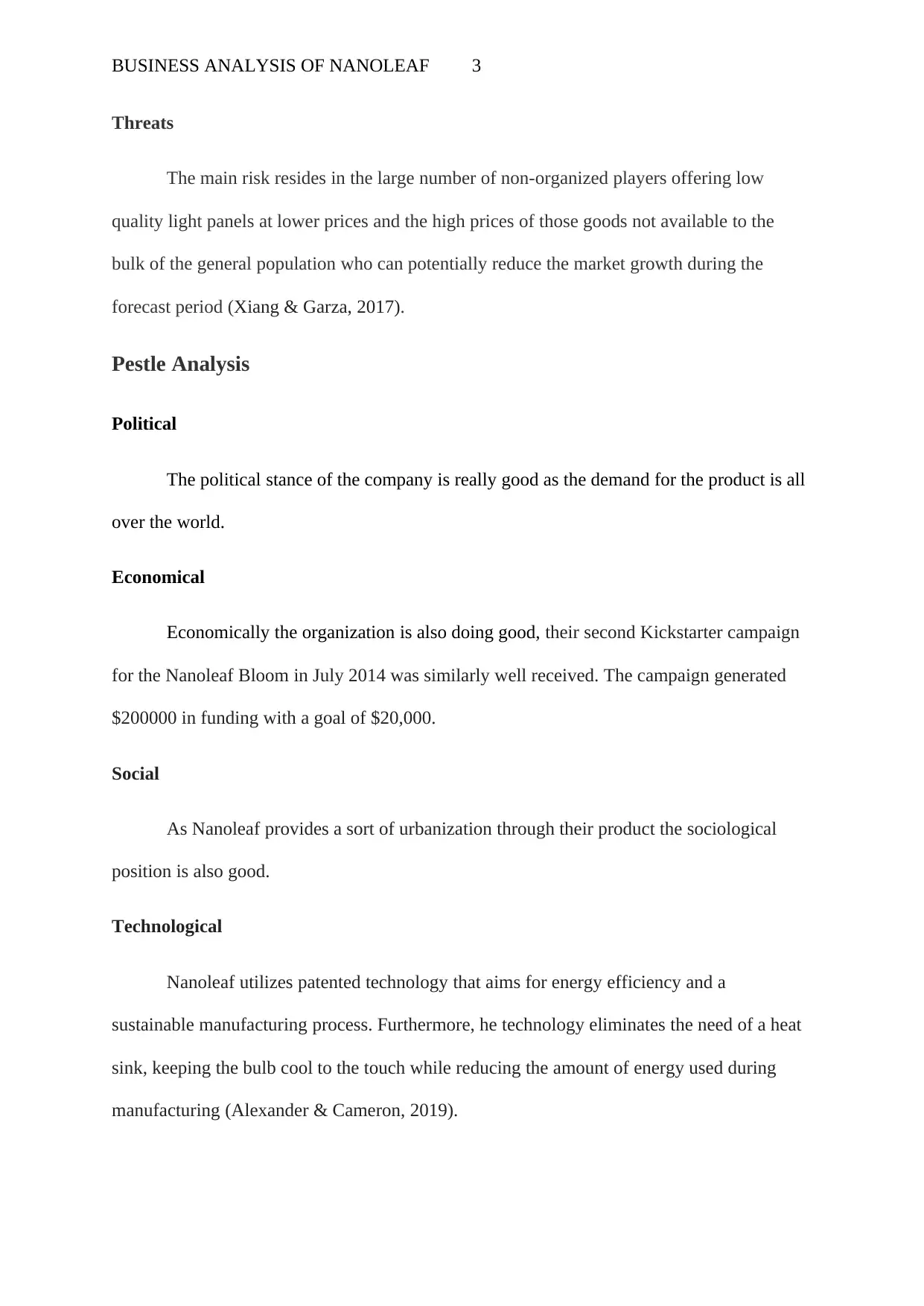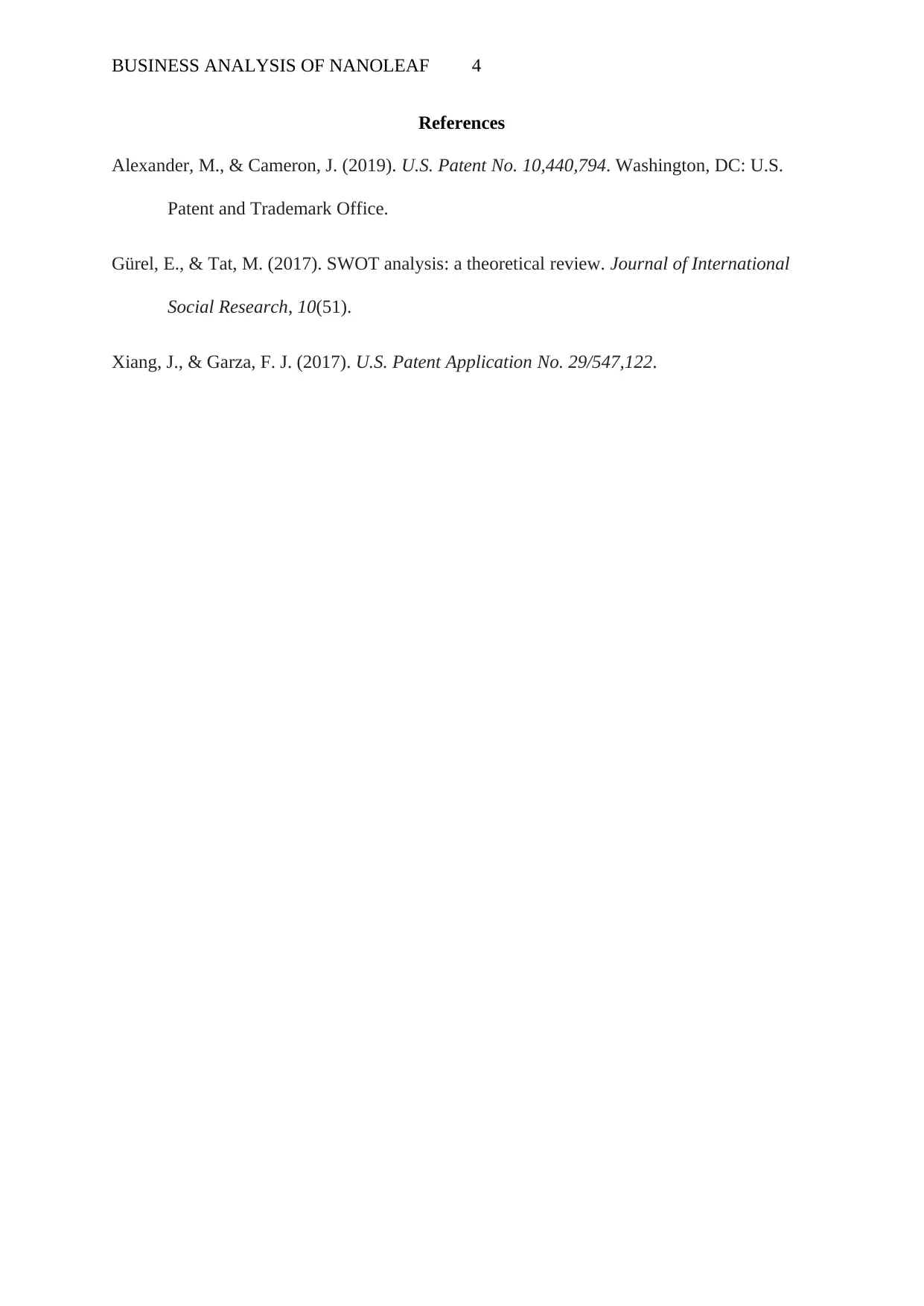Business Analysis of Nanoleaf - Business Development Report
VerifiedAdded on 2022/08/15
|4
|532
|41
Report
AI Summary
This report provides a comprehensive business analysis of Nanoleaf, a company specializing in LED lighting solutions. The analysis begins with an overview of Nanoleaf's history, including its Kickstarter campaigns and expansion into global markets. A SWOT analysis is then presented, evaluating the company's strengths, such as its ability to tailor products and minimize inventory, and weaknesses, like the founding members' lack of extensive experience. The analysis also explores opportunities in the growing Asian Pacific market and threats from low-cost competitors. Following the SWOT analysis, a PESTLE analysis examines the political, economic, social, technological, legal, and environmental factors influencing Nanoleaf's business environment. The report highlights the company's strong political stance, positive economic performance, and the social impact of its products. It also emphasizes Nanoleaf's patented energy-efficient technology and sustainable manufacturing processes. The report concludes by referencing key sources that support the analysis.
1 out of 4






![[object Object]](/_next/static/media/star-bottom.7253800d.svg)